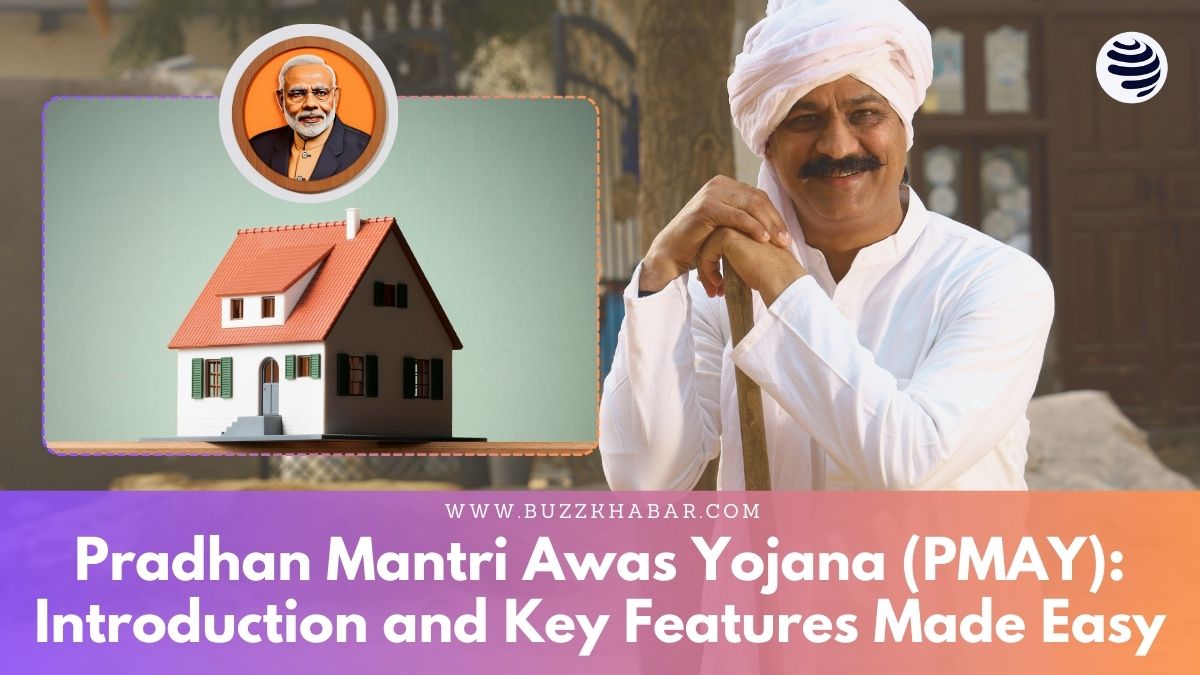
Subscribe to BuzzKhabar Newsletter
Enter your email address below and subscribe to our newsletter.

Enter your email address below and subscribe to our newsletter.

Pradhan Mantri Awas Yojana (PMAY) is a flagship housing scheme launched by the Government of India in June 2015. The scheme is aimed at addressing the housing needs of the urban and rural poor. With the goal of providing “Housing for All” by 2022, PMAY encompasses several key objectives and initiatives designed to make homeownership more accessible and affordable for economically weaker sections (EWS), low-income groups (LIG), and middle-income groups (MIG).
This article will walk you through the objectives and key features of Pradhan Mantri Awas Yojana (PMAY) to make you understand how PMAY is transforming the housing landscape in India
The primary objective of PMAY is to provide affordable housing to EWS, LIG, and MIG groups in both urban and rural areas. By focusing on affordability, PMAY ensures that even the most economically disadvantaged sections of society can own a home.
PMAY aims to improve the affordability of land and property for economically disadvantaged groups, making it easier for them to own homes. This involves various measures and subsidies to lower the cost of land and property acquisition.
The scheme places a strong emphasis on promoting affordable housing for weaker sections of society, including slum dwellers. By providing financial assistance and subsidies, PMAY helps these groups transition to better living conditions.
To empower women, PMAY mandates that the ownership of houses should be in the name of the female head of the household or jointly with males. This policy aims to enhance the social and economic status of women in society.
The scheme gives preference to senior citizens and differently-abled individuals by allocating ground floors in housing projects. This ensures that these groups have easier access and improved mobility within their homes.
All houses constructed under PMAY come with basic amenities such as water supply, toilets, electricity, and kitchens. This ensures a decent standard of living for all beneficiaries and addresses basic needs comprehensively.
PMAY includes components for in-situ slum redevelopment to provide better living conditions for slum dwellers through public-private partnerships. This initiative aims to transform slums into livable communities with adequate housing and amenities.
Sustainability is a core principle of PMAY. Houses under the scheme are constructed using eco-friendly and sustainable technologies and materials to minimize environmental impact. This approach ensures that housing development is in harmony with nature.
Safety is paramount in PMAY housing projects. The houses are designed and constructed to meet the requirements of structural safety against natural disasters like earthquakes, floods, cyclones, and landslides. They conform to the National Building Code (NBC) and other relevant Bureau of Indian Standards (BIS) codes.
PMAY-G aims to provide pucca houses with basic amenities to all eligible houseless households and those living in kutcha and dilapidated houses in rural areas by 2024. This ensures that rural populations also benefit from secure and comfortable housing.
The scheme offers financial assistance for the construction of new houses and the renovation of existing houses in rural areas. This support helps rural families build and improve their homes to meet modern standards.
PMAY-U addresses the housing shortage in urban areas, particularly among the EWS, LIG, and MIG categories, including slum dwellers. The scheme focuses on providing adequate housing to urban populations who face significant challenges in finding affordable homes.
The scheme provides central assistance to implementing agencies through States and Union Territories (UTs) for providing houses to all eligible families/beneficiaries by 2022. This assistance is crucial for the successful implementation of the scheme and ensures that housing projects are adequately funded.
The scheme provides an interest subsidy of up to 6.5% per annum on housing loans for a tenure of up to 20 years under the Credit Linked Subsidy Scheme (CLSS). The subsidy varies based on the income group:
The scheme is implemented in phases:
The government has approved significant investments for the construction of houses under PMAY-U and PMAY-G, with central and state assistance shared based on specific ratios (e.g., 60:40 for plain areas and 90:10 for special category states).
The Pradhan Mantri Awas Yojana (PMAY) is a transformative initiative aimed at ensuring affordable, safe, and sustainable housing for all. By focusing on economically weaker sections, promoting eco-friendly construction, and ensuring the provision of basic amenities, PMAY is making significant strides towards achieving its goal of “Housing for All.” Whether in urban or rural areas, the scheme is dedicated to improving the quality of life for millions of Indians, making homeownership a reality for those who need it the most.
For more such informative articles, follow BuzzKhabar.com and stay updated with the latest news and tips.